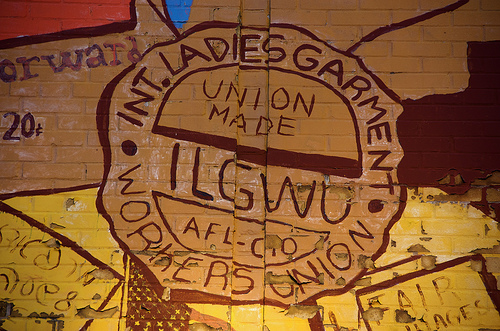 Since the passage of the National Labor Relations Act (NLRA) in the 1930s, union collective bargaining in the United States has been governed on a series of principles to ensure employee freedom in choosing representatives. Employees have the right to privately vote (or sign cards) for their representatives to ensure that employers or unions don’t meddle in the employees’ decisions. The system is far from perfect, which is why employee-empowering reforms like the Employee Rights Act are necessary, but it provides a minimum level of assurance for employee rights.
Since the passage of the National Labor Relations Act (NLRA) in the 1930s, union collective bargaining in the United States has been governed on a series of principles to ensure employee freedom in choosing representatives. Employees have the right to privately vote (or sign cards) for their representatives to ensure that employers or unions don’t meddle in the employees’ decisions. The system is far from perfect, which is why employee-empowering reforms like the Employee Rights Act are necessary, but it provides a minimum level of assurance for employee rights.
But unions want to change that by creating so-called “minority unions.” Using tactics ranging from workers centers to traditional union corporate campaigns, unions (and their front groups) make demands upon employers ranging from wages to benefits to working conditions. However, instead of pressuring employees into card check unionization, the minority unionism campaign seeks direct concessions from the employer, regardless of the views of the actual employees. Minority unions would dispense with voting on whether to create a union, require employers to pick sides, and deny fair representation for non-members, jeopardizing the rights of employees.
Under current law (defined under a Supreme Court decision titled International Ladies Garment Workers Union v. NLRB) it is an illegal unfair labor practice (ULP) for an employer to bargain exclusively with a union that is not certified as the majority representative of a group of employees (a normal union). (It is also an ULP for a minority union to demand and accept such recognition.) However, it is completely legal for a minority union to negotiate on behalf of its members and for the employer to engage in those negotiations. Because of this, minority unions may demand “members-only” contracts that affect only certain employees in the bargaining unit.
The Court found that minority union exclusive bargaining denied workers their rights to freely choose their representatives. By granting this right to the minority union, the employer would illegally “contribute … support” to the minority union and deny the silent majority their rights. The union also would deny employees’ rights by accepting the employer’s recognition while in minority status.
Alternatively, minority unions may engage in a corporate intimidation campaign until certain demands are met. And if they do organize a minority of the workplace, unions may use minority status as a foothold to majority unionism. Labor reporter Josh Eidelson quoted a labor professor suggesting the United Food and Commercial Workers (the union behind the worker center behind the Wal-Mart “strikes”) use minority union/worker center groups “as a tool to get to majority union status.”
One example of such a group is the Restaurant Opportunities Center (ROC), founded by the HERE (now part of UNITE-HERE) union in New York City. Its head, Saru Jayaraman, notes, “One difference between [ROC] and a union is that in a union you have to get a majority of a shop. In our case we just get a group of workers, but not necessarily the majority.” From there ROC pickets and makes demands without regard for NLRA rules since it doesn’t officially “deal with” (the NLRB’s legal term for union negotiating) the employers picketed.
However, as an article by a Nevada-based attorney notes, that could create several potential pitfalls for the arrangement to trample employee rights. If minority union members did not intend to authorize the union to bargain, bargaining may be an ULP. If any demand by the minority union affects non-members (like a contract provision affecting general working conditions might), it may be an ULP to bargain over it.
Minority unions place employers in a pickle: They may not be able to bargain without violating the law, but workers centers and other union front groups can picket, protest, and speak ill of the employer endlessly. (The NLRA prohibition on representational pickets — public unionization campaigns — of longer than 30 days does not apply to workers centers.) Employees, meanwhile, may find themselves with no way to express their true views on whether they want representation or not. If your workplace is confronted by a worker center minority union campaign, our WorkerCenters.com project has resources for employers and employees interested in their rights.
Instead of “new organizing models” that confuse and confound employees’ rights, real employee freedom would return to the bedrock principle of voluntary majority unionism without coercion or intimidation. The Employee Rights Act would provide that by requiring a private secret ballot vote on whether to unionize, whether to retain (recertify) an existing union, or whether to strike.



